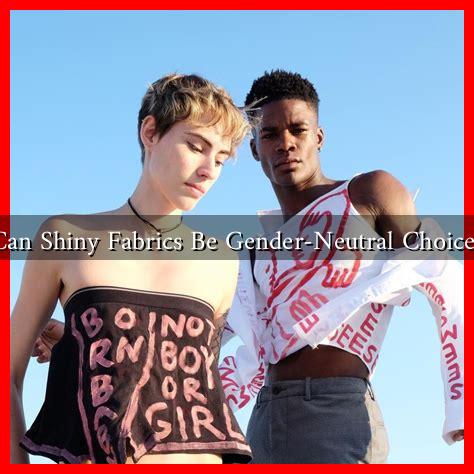-
Table of Contents
Can Shiny Fabrics Be Gender-Neutral Choices?
In recent years, the fashion industry has seen a significant shift towards inclusivity and gender neutrality. As societal norms evolve, the lines between traditional gendered clothing are becoming increasingly blurred. One intriguing aspect of this evolution is the use of shiny fabrics, which have often been associated with specific gender expressions. This article explores whether shiny fabrics can serve as gender-neutral choices, examining cultural perceptions, fashion trends, and consumer preferences.
The Cultural Context of Shiny Fabrics
Shiny fabrics, such as satin, silk, and metallic materials, have historically been linked to femininity. These materials are often used in evening wear, lingerie, and other garments that emphasize a certain aesthetic appeal. However, cultural perceptions are changing, and many designers are now challenging these traditional associations.
- Historical Associations: Shiny fabrics have been predominantly marketed towards women, often symbolizing glamour and elegance.
- Modern Interpretations: Designers like Rick Owens and Balenciaga have incorporated shiny materials into menswear, showcasing their versatility.
- Gender Fluidity: The rise of gender-fluid fashion has encouraged the use of shiny fabrics across all genders, promoting self-expression.
Fashion Trends Embracing Gender Neutrality
The fashion industry is increasingly embracing gender-neutral designs, with many brands launching unisex collections that feature shiny fabrics. This trend reflects a broader societal shift towards inclusivity and self-expression.
- Unisex Collections: Brands like Telfar and Acne Studios have released collections that include shiny fabrics, appealing to a diverse audience.
- Streetwear Influence: The rise of streetwear has popularized shiny materials in casual wear, making them accessible to all genders.
- Celebrity Endorsements: Public figures like Harry Styles and Billy Porter have worn shiny fabrics, challenging traditional gender norms and inspiring fans to embrace similar styles.
Consumer Preferences and Market Trends
Consumer preferences are shifting as more individuals seek clothing that reflects their identity rather than conforming to traditional gender norms. A survey conducted by the fashion research firm Edited found that:
- Over 60% of consumers aged 18-34 prefer brands that offer gender-neutral options.
- Shiny fabrics are increasingly popular among younger consumers, with a 30% increase in searches for metallic clothing in the past year.
- Brands that embrace inclusivity and diversity in their marketing see a 20% increase in customer loyalty.
This data suggests that shiny fabrics can indeed be a viable option for gender-neutral fashion, appealing to a broad audience that values self-expression and individuality.
Case Studies: Brands Leading the Way
Several brands are at the forefront of promoting shiny fabrics as gender-neutral choices. Here are a few notable examples:
- Gucci: Under the creative direction of Alessandro Michele, Gucci has embraced shiny fabrics in both menswear and womenswear, blurring the lines between traditional gendered clothing.
- Rihanna’s Savage X Fenty: This lingerie brand features shiny materials in its collections, catering to all body types and gender identities.
- ASOS: The online retailer has launched a gender-neutral collection that includes shiny fabrics, making them accessible to a wider audience.
Conclusion: The Future of Shiny Fabrics in Gender-Neutral Fashion
As the fashion industry continues to evolve, shiny fabrics are emerging as a compelling choice for gender-neutral clothing. The cultural context, fashion trends, and consumer preferences all point towards a future where these materials can be embraced by individuals of all genders. By challenging traditional norms and promoting inclusivity, designers and brands can help redefine the narrative around shiny fabrics, making them a staple in gender-neutral fashion.
In summary, shiny fabrics can indeed be gender-neutral choices, reflecting a broader societal shift towards inclusivity and self-expression. As more brands adopt this approach, we can expect to see a diverse range of styles that celebrate individuality, allowing everyone to shine in their unique way.
For more insights on gender-neutral fashion trends, visit Business of Fashion.

